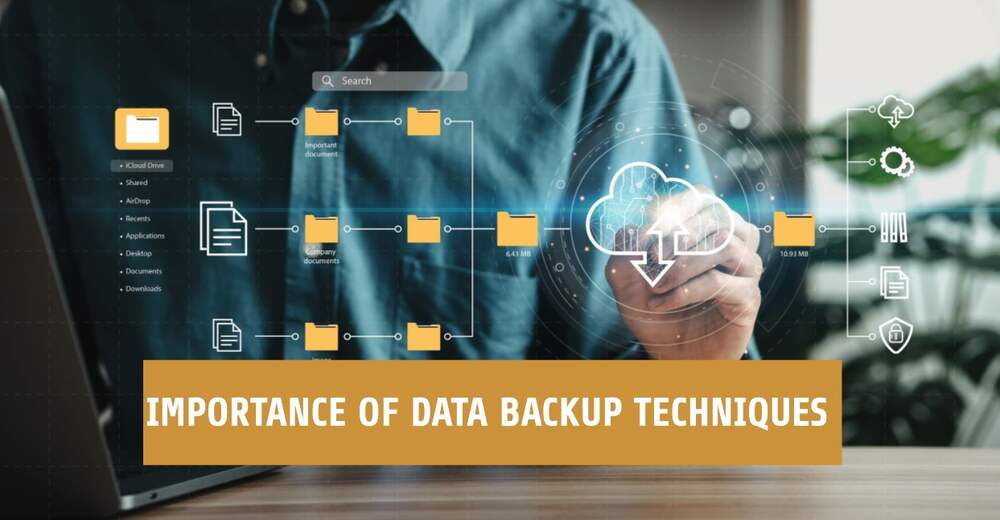Organizations use a variety of data backup techniques and strategies to protect data from loss. It means producing and preserving copies of data, or as businesses call it, operational recovery, and it is extremely crucial to perform.
Data backup is a practice that combines strategies and solutions to make backups more efficient and cost-effective. The transfer of data to one or more sites at predetermined intervals and capacities is crucial. You can build up a flexible data backup operation using your architecture, or you can blend available Backup as a Service (BaaS) solutions with local storage. Numerous corporate storage cost solutions are available today to assist you in calculating expenses, avoiding data loss, and preventing data breaches.
Recovery from a backup usually entails restoring the data to its original location or another alternative location for utilization instead of the lost or damaged data.
Data Backup
Media files, operating systems, registry files, machine images, documents, and configuration files are examples of backup data. It is essential to understand these concepts before diving into backup data techniques.
Backup Solutions
Although manual data backups are possible, most organizations use technology solutions to ensure their systems are constantly and consistently backed up.
Backup Policy
A backup policy is essential for identifying which files and system backups are important enough to regularly backup.
Backup Administrator
Every company needs to appoint a single person to be the backup administrator. This person ensures proper configuration of the backup systems, performs regular tests, and backs up important data.
Data Backup Techniques
There are a variety of data backup techniques and strategies available to secure the privacy and backup of your data and files.
-
Onsite Backup
An onsite backup is when you store data on a separate hard disc that is reachable over a local sharing network. If your local hard disc is unable to save or retrieve data, you can use the onsite backup to continue those operations. Furthermore, onsite backups connect to the same network as local hard drives in the same location.
-
Offsite Backup
An off-site data backup protects data by storing a copy of a company’s production system data in a location other than the original data. This data backup technique offers the advantage of further reducing the risk of data loss by storing data in multiple physical locations.
-
Redundancy
Redundancy ensures the full-time accessibility of data by making duplicates of your data to ensure its security and accessibility. One or more copies of data can minimize the risk of data loss in case of any software mishap, natural disaster, or other unforeseen circumstances.
-
Cloud Backup Services
Cloud backup services are a go-to data backup technique since they offer off-site storage and access via the Internet. These services help store your data on remote servers, usually run by a third-party operator, so that you can easily access it from any location with an internet connection. Encryption, redundancy, and automated backups are common characteristics of cloud backup services.
-
Removable Media
Removable media backup is a popular data backup technique that involves CDs, DVDs, floppy discs, and USB drives. This sort of backup is inexpensive and simple to use, making it an easy alternative for many customers. Moreover, it provides the ability to store removable media off-site or in a safe deposit box, giving it additional security in the event of a calamity.
Data Backup Strategy
The 3-2-1 rule is one of the best backup methods to have for ensuring the appropriate replication and timely recovery of your data. This implies creating three copies of your data to store on two distinct forms of storage and retaining one copy offshore. You’ll be able to construct a fail-safe system that protects your data this way. To be even more secure, keep more than one off-site duplicate.
Copies of Data
The three copies of data comprise your original data as well as two duplicates. This ensures that a lost backup or corrupted media is not preventing recovery.
Storage Types
Using two different technologies reduces the likelihood of failures in connection with a single medium. Popular storage options include internal and external hard drives, portable media, and cloud storage.
Off-site Copy
One off-site copy eliminates the possibility of a single point of failure. Off-site duplicates are essential for robust catastrophe and data backup techniques, and they can also serve as a failover during local outages.
Conclusion
All of these data backup strategies and techniques can protect your data from breaches and store it in a safe and secure location. Whatever solution you use, a good backup and data protection strategy is critical to the efficient operation of any business.
Keeping up with the competition is hard enough, and data loss can make it even more so. Secure your data! Back up now for safety!




